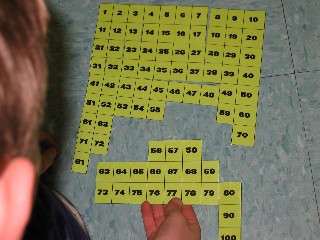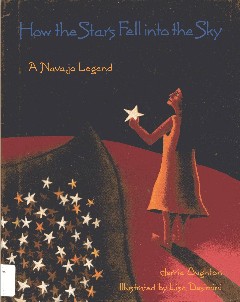
Using Hundred Board Puzzles
Students learn the patterns in the hundred board by assembling puzzles. Teachers are able to assess student use of patterns in rows and columns by observing the student at work. This task is easily differentiated to accommodate the varied levels in a first grade class by changing the number of pieces and the shape of the pieces. Puzzle bags should be sequentially lettered so that students progress through harder versions of the task. Finally, students are asked to create their own puzzles for classmates to solve.
- Download the
 hundred board template
hundred board template
Missing Numbers
Students enjoy when "Swiper" visits the classroom and steals numbers from the hundred board. Many students are familiar with the character Swiper from the Dora, the Explorer show on NickJr. In the classroom, Swiper loves to steal numbers from the hundred board and challenges students to figure out which numbers he's taken. Before students enter class, remove a couple of numbers from the pocket hundred chart or cover a couple of numbers with post-its on a hundred poster. Hang Swiper's picture and students will quickly see that he has swiped some numbers that they have to find. Used as a daily routine, this helps students figure out which numbers are missing and learn to explain how they figured out the missing numbers. By asking students if anyone found the number in a different way, teachers help students discover different patterns and ways of thinking about the numbers in a hundred board.
- Download
the picture of
 Swiper from the
Swiper from the  Printables section of the Dora site
Printables section of the Dora site

Literature Connection
Read the Navajo legend How the Stars Fell into the Sky by Jerrie Oughton. Discuss the stars and both the orderly constellations and the randomness of many stars in the night sky. Use magnetic number cards randomly placed on the board and ask students to find specific numbers. Discuss how hard it is to find a number when the numbers are "all mixed up." Distribute the number cards to students and ask them to place them in order, helping them to create the hundred chart in rows of 10. This activity can be added as a math center using number cards on any magnetic surface so that students can build the hundred chart using number pattern clues to assemble it correctly. This activity is easily differentiated by varying the numbers students are given (e.g. #1-20 or #1-50).
- Download the template for
 number cards for #1-100
number cards for #1-100
